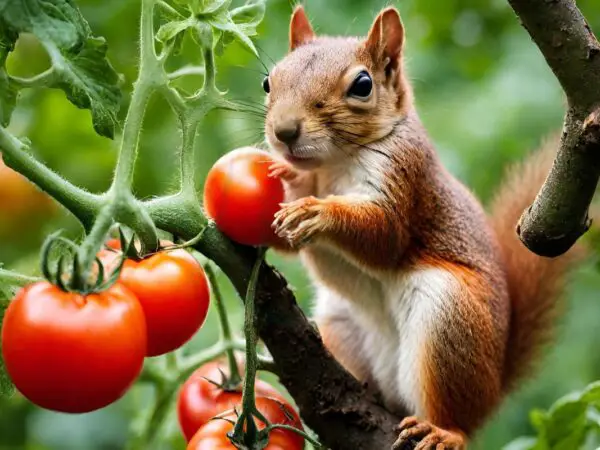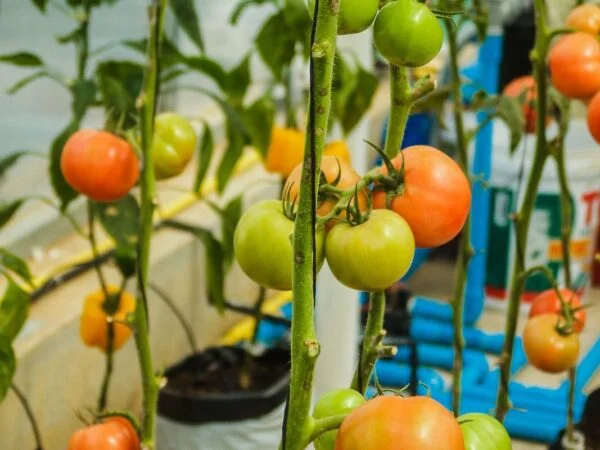Transplanting tomatoes is a crucial stage in their development, offering an opportunity to kickstart production./// As spring starts to cover the stage, the idea of transplanting becomes essential for successful growth. Understanding the importance of proper transplanting can help your tomato plants thrive in your garden. When things start heating up, providing the right conditions and support system becomes vital.
To begin, ensuring that your tomatoes have received enough light and warmth indoors from the sun sets the stage for a smooth transition outside. Helping them adjust gradually by exposing them to sun and wind for a part of the day can make all the difference. Once they reach about six inches in height, it's time to make their move into their permanent outdoor home.
The Importance of Transplanting Tomatoes
Transplanting tomatoes offers several growth benefits. It enhances overall plant growth by providing more space for the roots to spread out and absorb nutrients. /// As a result, this can lead to larger and healthier plants, ultimately increasing the yield of tomatoes. Transplanting stimulates fruit production by allowing the plants to establish themselves in a new soil before entering the flowering stage.
Moreover, transplanting tomato plants ensures that you have healthy and vigorous plants. By starting the plant indoors or in a controlled environment before moving them outside, you give them a head start in their development. This early advantage often results in stronger plant stems and leaves, setting the stage for robust growth throughout the season.
Health Improvement
After transplantation, tomato plants experience significant health improvements. Transplanting soil helps boost plant health post-transplantation by enabling them to adapt gradually to outdoor conditions. This gradual transition reduces stress on the plants and encourages steady growth once they are fully established outdoors.
Furthermore, transplanting minimizes transplant shock effects commonly experienced when moving seedlings directly from indoor pots to outdoor soil. The shock can stunt their growth or even cause wilting if not managed properly; however, through proper transplantation techniques such as hardening off (gradually exposing seedlings to outdoor conditions), these adverse effects can be minimized.
In addition to minimizing shock effects, transplanting also promotes disease resistance in tomato plants. /// When started indoors or within a controlled environment initially before being moved outside, plant diseases like blight are less likely to affect your tomatoes.
Optimal Timing for Transplantation
Seasonal Guidelines
Choosing the right season and soil for transplantation is crucial to ensure the success of your tomato plants. It's best to transplant them after the last frost date in your area, typically during late spring or early summer. This timing allows the soil to warm up adequately and provides favorable conditions for plant growth. Adhering to optimal weather conditions is essential, as extreme temperatures can cause transplant shock, stunting the growth of your tomatoes.
For instance, if you live in a region with hot summers, it's advisable to transplant your tomatoes in early spring when temperatures are milder. On the other hand, if you reside in a cooler climate, it's better to wait until late spring or early summer when there's no risk of frost and the soil has warmed up sufficiently.
Preparing for Tomato Transplantation
Soil Preparation
When transplanting tomatoes, it's crucial to prepare the soil properly. Start by ensuring that the soil is nutrient-rich, as this will provide essential nourishment for the newly transplanted seedlings. Consider adding organic matter such as compost or well-rotted manure to enrich the soil with vital nutrients and promote healthy plant growth. Balancing the pH levels of the soil is equally important for plant growth; aim for a slightly acidic pH level between 6.0 and 6.8 to create an optimal growing environment for your tomatoes.
Moreover, proper drainage is key to preventing waterlogged roots which can lead to diseases and stunted growth in tomato plants. Ample drainage ensures that excess water doesn't accumulate around the plant roots, allowing them to thrive in a healthy environment.
To summarize:
-
Ensure nutrient-rich soil
-
Balance pH levels (6.0 - 6.8)
-
Provide proper drainage
Location Selection
Choosing an appropriate location for transplanting tomatoes significantly impacts their growth and development. When selecting a site for transplantation, prioritize areas with ample sunlight exposure as tomatoes require at least six hours of direct sunlight daily to flourish optimally.
Furthermore, consider wind exposure when choosing a location; excessive winds can damage tender tomato seedlings during transplantation and hinder their growth thereafter.
Evaluate proximity to other plants when deciding on a transplanting location since certain plants may compete with tomatoes for nutrients or even transmit diseases.
Steps for Successful Tomato Transplantation
Digging Holes
When transplanting tomatoes, it's crucial to dig the holes at the right depth and width. The holes should be deep enough to accommodate the plant roots and wide enough to allow for proper root expansion. Creating a conducive planting environment involves loosening the soil around the hole to promote easier root penetration. This also helps in preventing root damage during transplantation.
To prevent damaging the delicate roots of tomato plants, it's important not to handle them roughly during digging. Gently loosen the soil around the plant and carefully lift it from its original location without disturbing its roots too much.
Pruning Roots
Before transplanting tomatoes, pruning excess roots is essential for encouraging healthy growth post-transplantation. Trimming any excessively long or damaged roots of a plant allows for better absorption of nutrients and water by redirecting energy towards new growth. It also reduces transplant shock impact by minimizing stress on the plant as it adapts to its new environment.
After pruning, consider soaking the trimmed roots in a solution containing root stimulator before replanting them into their new location. This encourages faster recovery and promotes vigorous root development after transplantation.
Burying Stems
Burying tomato stems at an appropriate depth is critical for successful transplantation. When planting tomatoes deeper than they were previously grown, additional roots will form along buried stems, promoting stronger anchorage and nutrient uptake. By burying more stem underground, you provide enhanced stability and support for your tomato plants as they grow taller.
The correct stem burial depth varies based on each individual plant's size but generally ranges between 2-4 inches below where leaves start growing on main stems.
Watering and Fertilization Post-Transplant
Watering Guidelines
After transplanting your tomatoes, it's crucial to establish a proper watering routine. This means ensuring the soil is consistently moist but not waterlogged. Overwatering can lead to root rot and other diseases, while underwatering can stress the plant. To support healthy root establishment, water the plants deeply once or twice a week, depending on the weather conditions.
It's essential to avoid extremes in watering, as both overwatering and underwatering can hinder the growth of your transplanted tomatoes. By maintaining proper hydration levels, you'll be supporting the plant's roots' ability to take hold in their new environment.
Fertilization Essentials
Post-transplantation, providing essential nutrients through fertilization is vital for the overall health and growth of your tomato plants. However, it's important to balance fertilizer application carefully to avoid causing stress to the newly transplanted seedlings.
Supporting Your Tomato Plants
Staking Methods
Using the right staking methods is crucial. You can opt for various staking options such as cages, stakes, or trellises to support plants. These help keep the plants upright and prevent them from bending or breaking under the weight of growing tomatoes. By providing adequate support, you ensure that the plants have a stable structure to grow and thrive.
Proper air circulation around the tomato plants is essential for their overall health. If plants are too close together or lying on the ground, they may be more susceptible to diseases due to poor airflow. Stakes and trellises facilitate better air circulation by keeping the plants off the ground. This reduces moisture buildup, ultimately promoting healthier tomatoes.
Mulching Techniques
After transplanting your tomatoes, implementing effective mulching techniques is key to their well-being. Mulch helps regulate soil temperature by keeping it cooler in hot weather and warmer during colder spells. This ensures that your transplanted tomato seedlings are not stressed by extreme temperatures, allowing them to establish strong roots.
In addition to regulating soil temperature, mulch also plays a vital role in maintaining optimal moisture levels around your transplanted tomatoes. It prevents water evaporation from the soil surface while allowing rain or irrigation water to penetrate through easily. This consistent moisture supply encourages healthy root development and reduces watering frequency post-transplantation.
Another benefit of mulching around your transplanted tomatoes is its ability to suppress weed growth effectively. Weeds compete with tomato plants for nutrients and water in the soil; therefore, controlling their growth is essential for ensuring that your tomatoes receive all necessary resources for robust growth.
Special Considerations for Semi-Mature Plants
Handling Fruits
When transplanting tomatoes with developing fruits, it's crucial to protect them from damage. Gently support the stems and fruits while moving the plant to minimize any risks of harm. Consider providing extra support like cages or stakes after transplantation to ensure that the fruits continue to develop properly.
After transplanting semi-mature tomato plants, minimizing fruit damage risks is essential for a successful transition. By handling the plants carefully and avoiding unnecessary jostling, you can reduce the chances of harming developing fruits. Supporting continued fruit development post-transplantation involves monitoring their growth and providing additional structural support if needed.
Pruning Techniques
Implementing strategic pruning methods after transplanting tomatoes helps promote healthy foliage growth. Removing any damaged or yellow leaves can redirect the plant's energy towards new growth, ensuring its overall health post-transplantation. Managing plant shape and size through selective pruning also contributes to maintaining an optimal environment for continued growth.
Pruning techniques play a vital role in managing tomato plants after transplantation by promoting healthy foliage growth. Trimming away any diseased or damaged parts encourages new, robust leaf development, contributing to the plant's overall well-being post-transplantation. Furthermore, managing plant shape and size through strategic pruning ensures that the plant receives ample resources for sustained growth.
Hardening Off Before Transplantation
Acclimatization Process
Transplanting tomatoes directly from an indoor environment to the harsh outdoor conditions can shock and stress the plants. Acclimatization is crucial for helping the plants adjust gradually. This involves exposing the plant to outdoor conditions over a period of time, allowing it to adapt slowly. By doing this, you minimize the risk of transplant shock and help ensure that your tomatoes thrive in their new environment.
Gradually introducing your tomato plants to outdoor conditions can be achieved by placing them outside for a few hours each day initially. Over time, increase the duration until they are spending full days outdoors before transplantation. This process helps prevent sudden exposure which could cause stress or damage to the plants' delicate systems.
Minimizing environmental stress on transplanted tomatoes is essential for their overall health and productivity post-transplantation. It's important to keep an eye on weather forecasts during this acclimatization period and avoid moving your tomato plants outdoors if extreme weather conditions are expected, such as heavy winds or storms.
Timing and Duration
Understanding when it's best to transplant your tomatoes is crucial for their successful growth after transplantation. The optimal timing for planting largely depends on local climate conditions, but generally occurs when all danger of frost has passed and soil temperatures have warmed up sufficiently.
The duration of the acclimatization period varies depending on factors like plant age, current growing conditions, and local climate patterns. For instance, semi-mature tomato seedlings might need more time compared to younger ones due to their increased sensitivity.
Planning for long-term growth after transplantation requires considering factors beyond just initial survival post-transplantation. You should anticipate how well your tomatoes will fare in different seasons once they're fully established in their new environment.
Post-Transplant Care for Tomato Plants
After transplanting tomatoes, it's crucial to ensure they receive the right amount of sunlight. Tomatoes generally require at least six to eight hours of direct sunlight daily. Assess the sun exposure needs by observing how much sunlight the area receives throughout the day.
During acclimatization, monitor any changes in sun exposure that may occur due to shifting shadows or seasonal variations. Providing adequate sunlight without causing stress is essential for healthy tomato growth post-transplantation. Too much direct sunlight can lead to wilting and sunburn, while too little can result in leggy plants with poor fruit production.
It's vital to strike a balance and adjust as needed during this critical phase.
Determining the proper spacing between transplanted tomato plants is key for their overall health and productivity. Overcrowding can lead to increased competition for nutrients, water, and light among plants. This can result in stunted growth and decreased yields.
By providing sufficient space between each plant, you allow them room for unrestricted root development and airflow around foliage – reducing the risk of diseases such as blight caused by poor air circulation.
For determinate varieties (bush-type), aim for a spacing of about 24-36 inches apart; indeterminate types (vining) should be spaced 36-48 inches apart. These measurements help prevent overcrowding while ensuring optimal growth conditions.
Conclusion
You've now learned the crucial steps for successfully transplanting your tomato plants. By understanding the optimal timing, preparation, and post-transplant care, you're equipped to ensure the health and productivity of your tomatoes. Remember, providing adequate support, watering, and fertilization is key to nurturing your transplanted tomatoes into thriving, bountiful plants. Don't forget the special considerations for semi-mature plants and the importance of hardening off before transplantation. Now go out there and give your tomatoes the best start possible!
Frequently Asked Questions
How important is transplanting tomatoes for their growth?
Transplanting tomatoes is crucial for their healthy growth. It allows the roots to establish in a new environment, resulting in stronger and more productive plants.
When is the optimal timing for transplanting tomatoes?
The optimal time to transplant tomatoes is when they have developed strong stems and at least two sets of true leaves, typically 6-8 weeks after sowing seeds indoors.
What are the key steps for successful tomato transplantation?
Successful tomato transplantation involves careful preparation of the planting site, gentle handling of seedlings, proper watering post-transplantation, and providing adequate support as they grow.
Why is hardening off necessary before transplanting tomatoes?
Hardening off helps acclimate tender seedlings to outdoor conditions gradually, preventing shock and ensuring they can thrive once transplanted into the garden or containers.
How should I care for tomato plants after transplantation?
After transplantation, it's essential to continue providing consistent watering and appropriate fertilization while monitoring for signs of stress or disease. Offering structural support as needed will promote healthy growth.
Image Source: Paid image from CANVA




